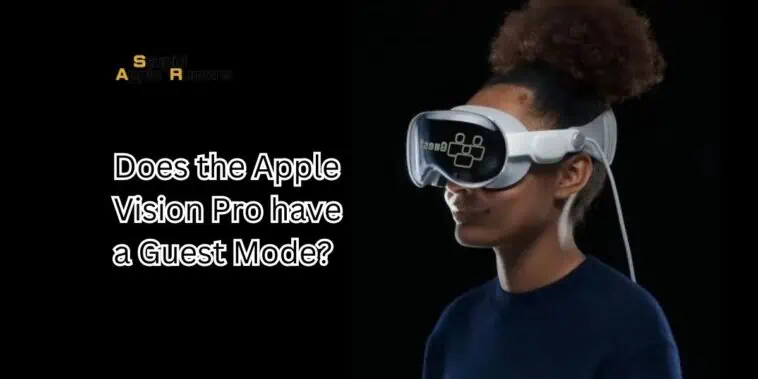Apple has once again set tongues wagging in the tech world with its latest offering, the Vision Pro.
Launched at the much-anticipated WWDC23, it brings forth a blend of augmented reality and impeccable user authentication.
One question, however, has been on everyone’s lips: Does the Apple Vision Pro come equipped with a Guest Mode?
Does the Apple Vision Pro have a Guest Mode?
Table of Contents
Yes, Apple, understanding the potential for shared household use due to the Vision Pro’s premium price, introduced this mode to allow others a taste of its capabilities.
Guest Mode facilitates controlled access, devoid of Optic ID triggers, while keeping personal data like hidden photos shielded.
It promises not just a glimpse but a deeper exploration, setting the stage for Apple’s envisioned future.
What is Optic ID and How Does It Redefine Security?
Optic ID is Apple’s cutting-edge biometric security feature introduced with the Vision Pro. It employs iris recognition to validate user identity, ensuring that only the registered user can unlock and utilize the headset.
Here’s how it functions: Apple’s sensors emit LED light to capture a 3D scan of the user’s iris. This intricate system allows for an advanced level of detail and precision in recognizing the user.
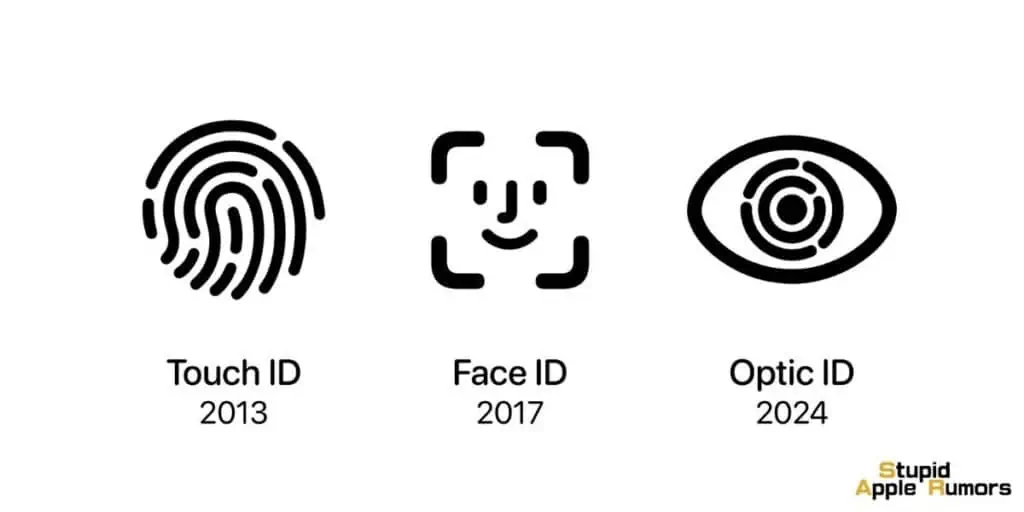
Once scanned, Optic ID contrasts the live scan with a reference model securely stored in the Vision Pro’s Secure Enclave, ensuring the data remains confined to the device.
This method bears a resemblance to Apple’s Face ID technology used in their recent iPhone models, wherein facial scans are kept securely and locally on the device.
As for the robustness of Optic ID, Apple’s history with Touch ID and Face ID provides insights. Both these systems were honed using over a billion images via a deep learning algorithm.
It’s anticipated that Apple has employed a similar approach with Optic ID, focusing on refining its accuracy and reliability.
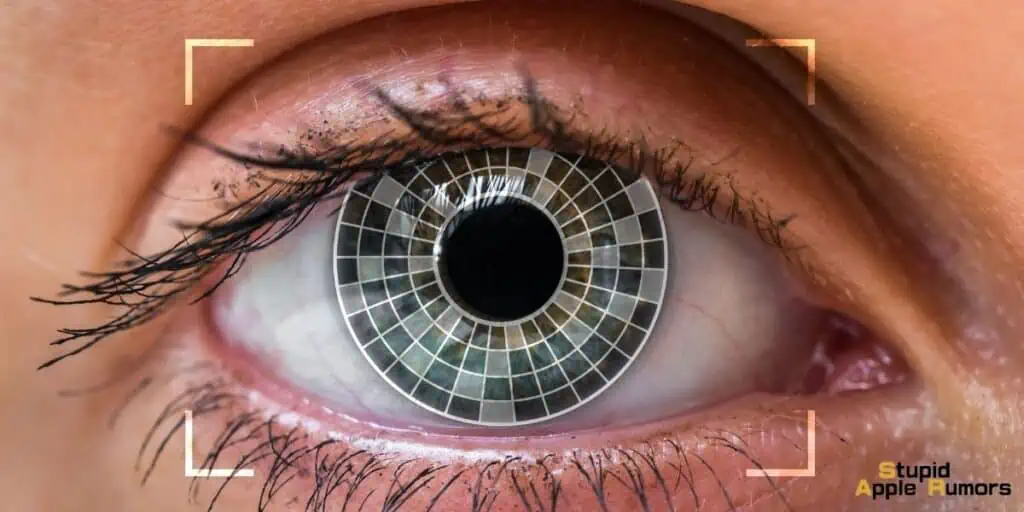
Notably, the 3D depth data used in the scanning process ensures that mere 2D representations, like printed photos, cannot deceive the system.
Additionally, Optic ID boasts an impressive capability to distinguish between identical twins, an area where Face ID sometimes faltered.
Beyond just unlocking the Vision Pro headset, Optic ID has broader applications.
It seamlessly integrates with the Apple ecosystem, facilitating Apple Pay transactions, confirming App Store purchases, and enabling iCloud Keychain’s autofill feature, thereby streamlining the user experience while bolstering security.
Why is There a Need for a Guest Mode in Vision Pro?
While the Vision Pro boasts of personalized experiences, its $3,500 price tag means that households might share a single device.
Apple recognizes this reality. The device, while personal, shouldn’t be so exclusive that family members can’t get a taste of the Vision Pro magic.
The solution? A Guest Mode. This mode ensures that while users can share the device experience, the sanctity of personal data remains uncompromised.
How Does Guest Mode Work?
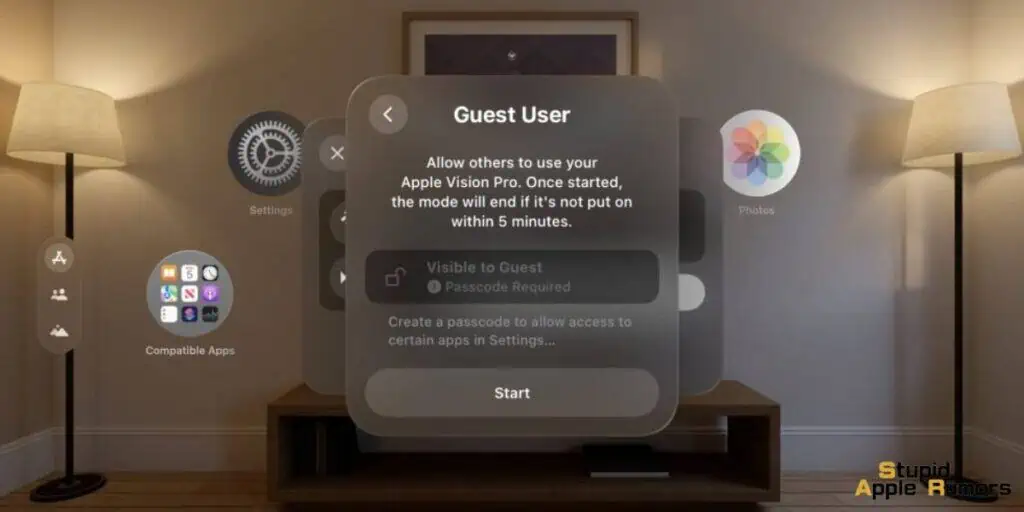
Drawing a parallel to the multi-profile setup on Netflix or Prime Video, the Guest Mode in the Vision Pro is designed for customizable interactions.
A Vision Pro owner has the discretion to activate or deactivate this feature. When active, a secondary user can access a limited environment without triggering the Optic ID system.
For additional security layers, passwords can be set for Guest Mode users, offering them a curated experience without compromising the owner’s private data.
Are Hidden Photos and Other Data Safe?

Yes, very much so. Despite the Guest Mode’s access, certain personal features, like hidden or deleted photos, remain under the protective umbrella of Optic ID.
This level of security is reminiscent of the iPhone’s dual-system of Touch ID and Face ID. An essential footnote here: those using prescription lenses might have to go through multiple scans for the Optic ID, mirroring Face ID’s approach.
Can Guest Mode Provide a Full User Experience?
The beauty of the Vision Pro’s Guest Mode lies in its depth. It’s not just a superficial preview of the device.
Speculation abounds that this mode might allow the creation of new, albeit limited, profiles, much like secondary accounts on various online platforms.
The exact depth of these interactions, especially concerning the App Store, remains to be detailed by Apple.
Does the Apple Vision Pro Have a Travel Mode?

Yes, the Vision Pro does in fact come with a built-in Travel Mode. Recognizing the challenges of the confined airplane cabin environment for VR devices, Apple has tailored the Vision Pro to ensure a seamless experience in the skies.
The developer beta for visionOS reveals prompts like “Are you on an airplane?” and “Turn on Travel Mode when you’re on an airplane to continue using your Apple Vision Pro.”
These not only underline the mode’s intent but also highlight its importance for airborne users.
Upon activation, you might note some intriguing adjustments. For one, spatial awareness features could be scaled down or turned off, ensuring no unexpected VR disruptions due to the airplane’s tight confines.
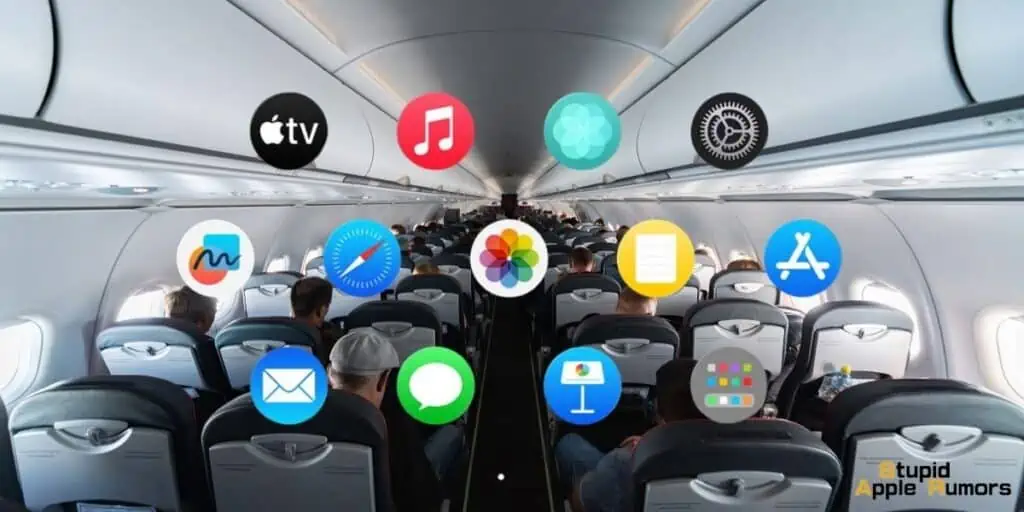
The note “Your representation is unavailable while Travel Mode is on” hints that Digital Personas, or avatars, might be temporarily out of reach, possibly due to these spatial constraints.
Another prompt suggests the Vision Pro’s fit might differ in-flight, affecting gaze tracking. But this is not a big issue as the Travel Mode is primed to recalibrate as needed.
One standout directive from the Vision Pro is its emphasis on stillness with “Remain stationary in Travel Mode.” This ensures that you are not just immersed safely in their VR world, but are also considerate of fellow passengers.
Does the Apple Vision Pro have a Guest Mode FAQs
What is Optic ID and how does it differ from Face ID?
Optic ID is Apple’s latest biometric security feature in the Vision Pro. It uses iris recognition to validate a user’s identity. While similar in function to Face ID, which uses facial scans, Optic ID focuses on capturing a 3D scan of the user’s iris for authentication.
What’s the primary purpose of the Guest Mode in Vision Pro?
Given the Vision Pro’s hefty price tag, Apple designed Guest Mode for households sharing the device, allowing multiple users to experience its features while keeping personal data, like hidden photos, protected.
How does Guest Mode work in Vision Pro?
Similar to multi-profile setups like Netflix, Guest Mode offers customizable interactions for secondary users without triggering the Optic ID. The primary user can set passwords for guests, ensuring a secure and tailored experience.
Does the Vision Pro offer a complete experience in Guest Mode?
While Guest Mode provides a comprehensive preview, the depth of interactions, especially related to the App Store, is yet to be detailed by Apple.
What changes does Travel Mode bring to the Vision Pro experience?
Travel Mode adjusts the device’s spatial awareness features, and could deactivate the Digital Personas or avatars. It also advises users to remain stationary, ensuring both immersive VR and passenger safety.
Final Thoughts: Is the Apple Vision Pro the Future?
With its state-of-the-art Optic ID and the forward-thinking Guest Mode, the Apple Vision Pro epitomizes Apple’s dual commitment to innovation and user experience.
As the world waits with bated breath for its official release in 2024, one thing is clear: Apple’s Vision Pro is more than just a device; it’s a glimpse into the future.
Related

